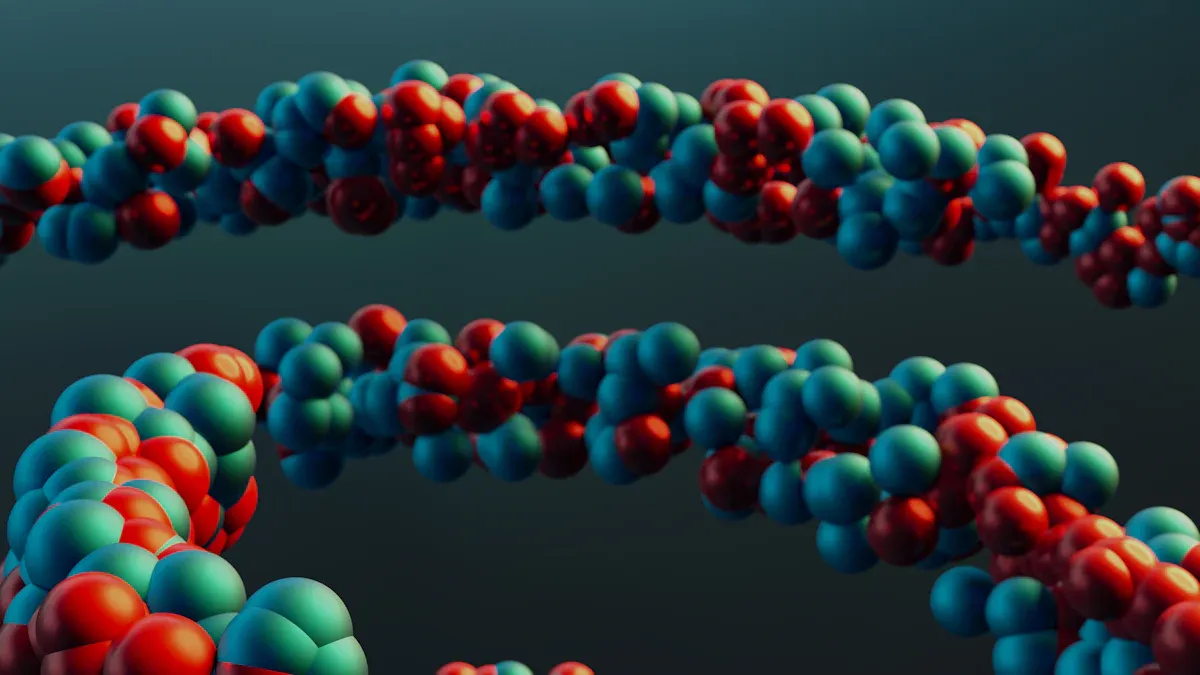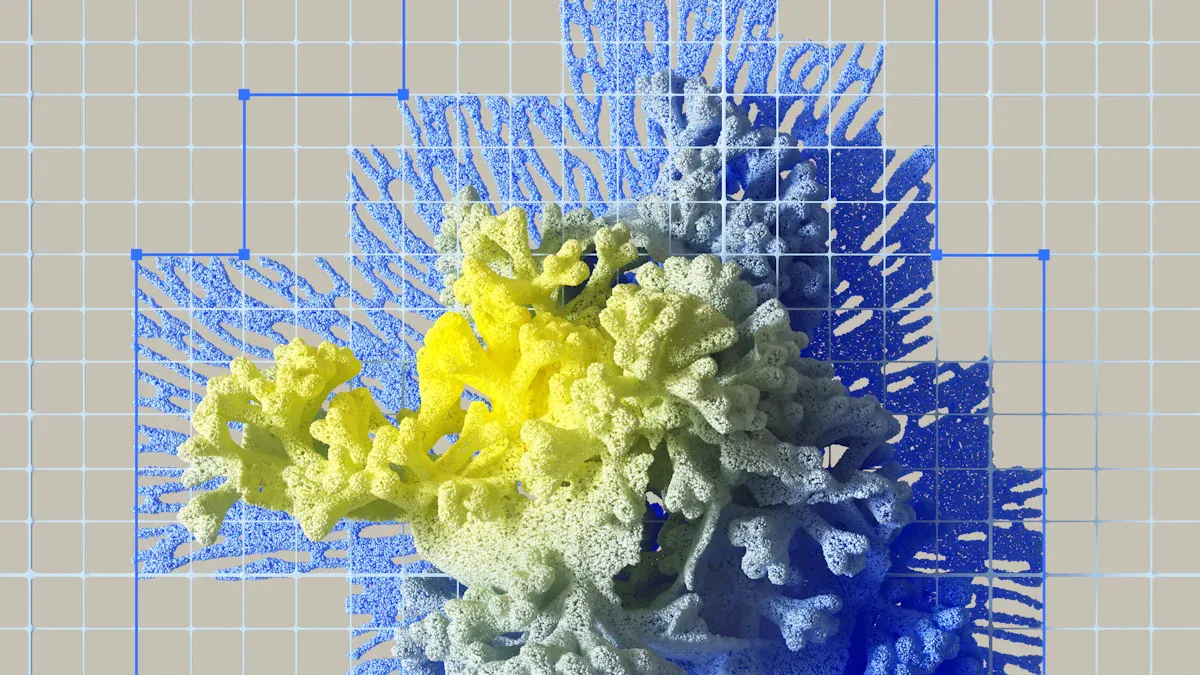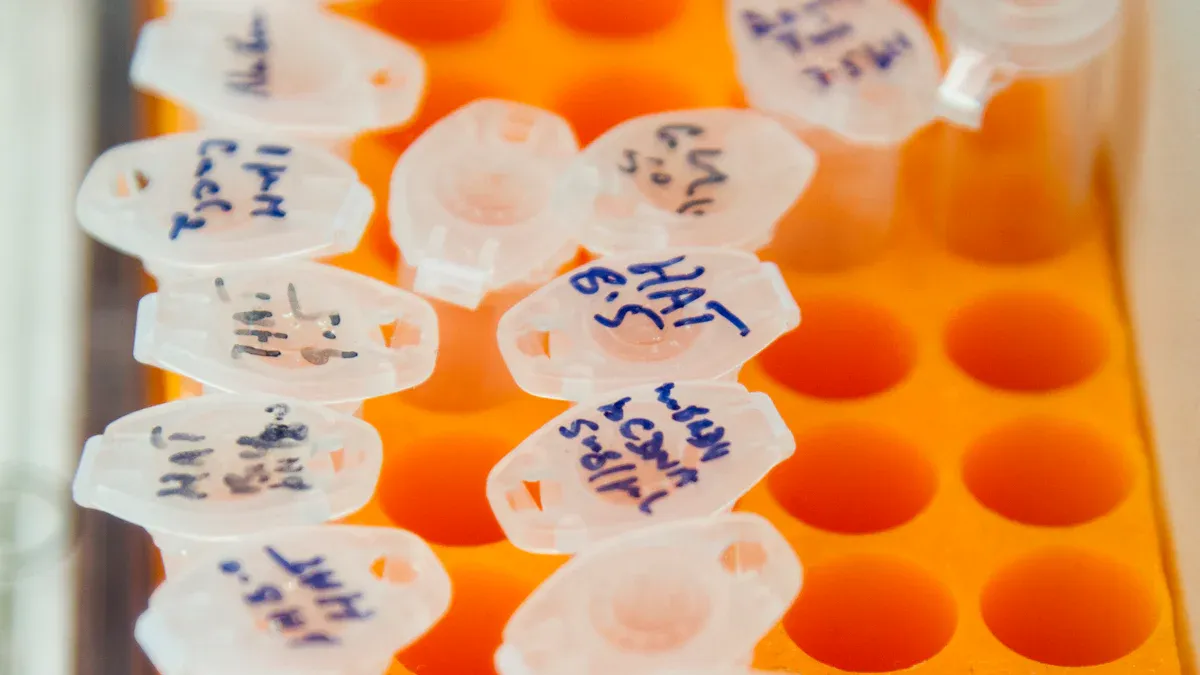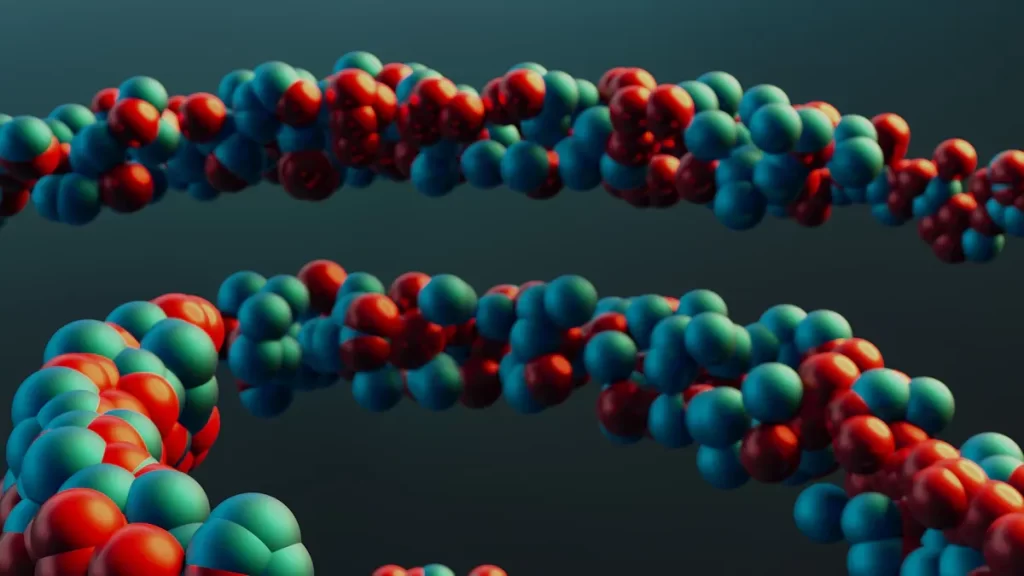News & Events
The Role of Maltose Binding Protein in Improving Protein Expression Systems

Maltose binding protein (MBP) has transformed protein expression systems. Scientists use MBP to boost protein expression levels and make hard-to-express proteins easier to work with. MBP increases solubility, yield, and stability. Its structure helps proteins fold correctly and stay active. Many researchers choose MBP for antibody research because it works well as a fusion tag. The table below highlights the most reported benefits of using MBP:
| Benefit | Description |
|---|---|
| Enhanced protein expression levels | MBP significantly increases the expression levels of various proteins in mammalian cells. |
| Reduced cell death | The use of MBP fusion proteins results in fewer dying cells during the transfection process. |
| Improved secretion | MBP facilitates better secretion of proteins through the ER and Golgi apparatus. |
| Secretion of otherwise retained proteins | MBP allows the secretion of mutant proteins or fragments that would typically be retained in the ER. |
Key Takeaways
- Maltose Binding Protein (MBP) significantly enhances protein solubility and yield, making it easier to work with hard-to-express proteins.
- Using MBP as a fusion tag improves purification efficiency, often achieving 70-90% purity in just one step with mild conditions.
- The positioning of MBP in fusion constructs matters; N-terminal fusions generally provide better solubility and expression than C-terminal fusions.
- MBP acts as a molecular chaperone, helping proteins fold correctly and preventing aggregation during expression and purification.
- Researchers can use engineered MBP variants to improve stability and function, expanding the potential for protein expression and antibody research.
Maltose Binding Protein Benefits
Solubility Enhancement
Researchers often face challenges when expressing recombinant proteins because many proteins tend to aggregate or form insoluble clumps. MBP helps solve this problem by acting as a solubility enhancer. When scientists fuse MBP to a target protein, the fusion often stays dissolved in the cell, making it easier to study and use. MBP stands out compared to other solubilizing agents, such as GST and thioredoxin, especially for proteins that are prone to aggregation.
- MBP has shown superior performance in keeping aggregation-prone proteins soluble.
- Some proteins fused to MBP reach their biologically active forms.
- MBP may work as a molecular chaperone, stopping folding intermediates from sticking together.
MBP is recognized as one of the most effective solubility tags in high-throughput tests. However, about 25% of proteins expressed as MBP fusions still aggregate or become insoluble if the tag is removed. The effectiveness of MBP and other solubility tags depends on the unique features of each target protein. For some proteins, tags like thioredoxin do not improve solubility, as seen in studies with CGRP-RCP.
MBP’s ability to enhance solubility links closely to its ligand binding properties. The maltose binding protein interacts with its ligand, maltose, through specific binding affinity. These ligand interactions help stabilize the protein structure, which can prevent aggregation. The ligand binding process involves multiple interactions between MBP and the ligand, supporting the correct folding of the fusion protein. This process highlights the importance of ligand binding and binding affinity in protein expression systems.
Yield Improvement
MBP not only improves solubility but also increases the overall yield of recombinant proteins. The position of MBP in the fusion construct matters. N-terminal MBP fusions usually provide better solubility and higher expression than C-terminal fusions. Only proteins that are already soluble can be produced as soluble fusions when MBP is at the C-terminus. The sequence of the linker between MBP and the target protein also affects solubility and yield.
| Study | Findings |
|---|---|
| Positional effects of fusion partners on the yield and solubility of MBP fusion proteins | N-terminal MBP fusions provide better solubility and expression compared to C-terminal fusions. Only intrinsically soluble proteins are produced as soluble fusions when preceding MBP. Differences in linker sequences affect solubility. |
| Mutations in maltose-binding protein that alter affinity and solubility properties | Certain mutations in MBP reduce its ability to enhance solubility in fusion proteins, indicating sensitivity to alterations. Mutations did not render MBP insoluble but affected solubility enhancement. |
MBP enhances solubility and prevents aggregation of difficult-to-express proteins. Its N-terminal positioning is superior for both yield and solubility. MBP acts as a cis chaperone, shielding proteins from aggregation factors. As an affinity tag, MBP helps in purification and reduces protein loss. However, the large size of MBP can sometimes burden host cells, which may affect yield.
| Evidence Type | Description |
|---|---|
| Solubility Enhancement | MBP enhances solubility and prevents aggregation of difficult-to-express proteins. |
| Positioning Impact | N-terminal positioning of MBP is superior for yield and solubility compared to C-terminal. |
| Chaperone Function | MBP acts as a cis chaperone, shielding proteins from aggregation factors. |
| Affinity Tag Characteristics | MBP serves as an affinity tag, aiding in purification and reducing protein loss. |
| Size Limitation | The large size of MBP can burden host cells, potentially affecting yield negatively. |
The yield improvement provided by MBP is closely tied to its ligand binding and binding affinity. The maltose binding protein interacts with its ligand through specific binding interactions, which help maintain the stability and solubility of the fusion protein. These ligand interactions are essential for high protein expression and yield.
Purification Efficiency
MBP makes purification of recombinant proteins much easier. Scientists can use a simple affinity step with amylose-agarose columns to capture MBP fusion proteins. This method often results in proteins that are 70-90% pure after just one step. MBP also helps the target protein fold correctly and stay soluble during purification.
| Method | Recovery Rate | Dynamic Binding Capacity | Purity Level |
|---|---|---|---|
| Mixed-mode resins | 80-85% | 5-fold higher than affinity resins | Equivalent to affinity resins |
| Affinity resins | 50-60% | N/A | 70-90% |
MBP allows for purification under mild conditions, using maltose to elute the protein at neutral pH. This gentle process helps preserve the activity of sensitive proteins. Compared to other affinity tags, MBP provides higher yields and improved solubility, though its larger size can sometimes cause aggregation issues.
| Feature | Maltose Binding Protein (MBP) | Other Affinity Tags |
|---|---|---|
| Protein Expression Levels | Enhanced | Variable |
| Solubility | Improved | Often lower |
| Yield | Higher | Generally lower |
| Elution Conditions | Mild (neutral pH, maltose) | Often harsher |
| Size | Larger | Smaller |
| Aggregation Issues | Possible | Less likely |
- MBP enhances solubility of fusion proteins.
- Purification is achieved using amylose resin-based chromatography.
- Elution occurs under mild conditions with maltose.
- MBP provides higher yields compared to polyhistidine tags.
MBP’s ligand binding and binding affinity play a central role in purification. The maltose binding protein interacts with its ligand, maltose, through specific binding interactions. These ligand interactions allow for selective purification, as only proteins with MBP will bind to the amylose resin. The ligand binding process ensures that the target protein can be separated from other cellular proteins efficiently. This high binding affinity and specific ligand binding make MBP a valuable tool for protein purification.
Tip: MBP’s ability to bind maltose with high affinity makes it a reliable choice for researchers who need efficient purification and high protein yield.
Maltose-Binding Protein Structure

Domain Organization
Scientists have studied the structure of maltose-binding protein using high-resolution techniques. The protein has two globular domains connected by a hinge region. This domain organization allows the protein to change shape when it binds maltose. The hinge acts like a flexible joint, letting the domains move closer together or farther apart. Researchers found that these movements are important for the protein’s function as a fusion tag. The two-lobe structure helps maintain stability and supports proper folding.
| Evidence Description | Implication for Stability and Function |
|---|---|
| MBP consists of two lobes connected by a flexible hinge region. | The hinge allows for conformational changes necessary for ligand binding. |
| Ligand binding induces structural rearrangements in both lobes and the hinge. | This induced fit mechanism is crucial for the protein’s functional state. |
| Mutations can tune the affinity for maltose without altering binding pocket residues. | This indicates that domain organization is key to maintaining stability while allowing functional adaptability. |
Researchers have published high-resolution structures that show how maltose-binding protein transitions from an open to a closed state. These studies highlight the importance of the hinge region and domain arrangement for protein stability and adaptability.
Flexible Linker
The flexible linker in maltose-binding protein fusion constructs plays a key role in protein folding and activity. Linkers rich in glycine and serine, such as the GS linker, provide flexibility and help keep domains separated. This separation allows each domain to fold correctly and maintain its function. Scientists can adjust the length of the linker to optimize biological activity. The GS linker improves folding and stability, making sure that the fusion protein works as intended.
| Evidence | Description |
|---|---|
| Flexible Linkers | Flexible linkers, rich in small or polar amino acids like Gly and Ser, enhance flexibility and solubility, crucial for maintaining proper separation and orientation of functional domains in fusion proteins. |
| GS Linker | The GS linker, consisting of Gly and Ser residues, can be optimized in length to ensure appropriate separation of functional domains, which is essential for optimal biological activity. |
| Folding and Stability | The flexible GS linker has been shown to improve folding and stability in fusion proteins, allowing for correct orientation of protein domains without interfering with their folding. |
Note: The flexible linker helps prevent domains from interfering with each other, which supports proper folding and increases the chance of producing active proteins.
Hydrophobic Cleft
The hydrophobic cleft is another important feature of the maltose-binding protein structure. This cleft can change shape to fit different target proteins. It acts as a temporary binding site for hydrophobic folding intermediates, stopping them from sticking together and forming clumps. The cleft’s ability to interact with various proteins helps improve solubility and expression, especially for proteins that are hard to express.
| Feature | Role |
|---|---|
| Large hydrophobic cleft | Alters shape to accommodate different target proteins, promoting proper folding. |
| Ligand-binding cleft | Acts as a transient binding site for hydrophobic folding intermediates, preventing aggregation. |
Researchers have used high-resolution structures to study how the hydrophobic cleft works. These studies show that the cleft is crucial for the protein’s ability to act as a fusion tag and improve solubility.
Tip: The hydrophobic cleft in maltose-binding protein helps prevent aggregation, making it easier to produce and purify recombinant proteins.
MBP Fusion Strategies
Expression Systems
Researchers use many expression systems to produce recombinant proteins with mbp fusion tags. The most common systems include bacterial, mammalian, and yeast cells. Each system offers unique advantages for protein production. Bacterial systems, such as E. coli, allow fast and cost-effective protein expression. Scientists often choose E. coli for initial screening of recombinant proteins because it supports high levels of mbp fusion protein production.
Mammalian cells provide a more natural environment for complex recombinant proteins. These cells help mbp boost solubility and expression levels, especially for eukaryotic proteins. Some studies show that fusion to mbp can increase recombinant protein expression up to 200-fold for certain targets. Yeast systems also support recombinant protein production, offering post-translational modifications that bacteria cannot provide.
Researchers select the best system based on the type of recombinant protein and the desired yield. The table below highlights the main features of each system:
| Expression System | Advantages | Typical Use |
|---|---|---|
| Bacterial (E. coli) | Fast, high yield, low cost | Initial screening, simple recombinant proteins |
| Mammalian | High solubility, complex protein production | Eukaryotic recombinant proteins, structural studies |
| Yeast | Post-translational modifications | Recombinant proteins needing modifications |
MBP fusion tags also help with crystallization and phasing, making structural studies of recombinant proteins easier.
Folding and Stability
MBP fusion tags play a key role in the folding and stability of recombinant proteins. Scientists use mbp to keep recombinant proteins soluble and active during protein production. MBP acts as a molecular chaperone, guiding recombinant proteins to fold correctly. This process prevents aggregation and loss of function.
MBP fusion allows researchers to purify recombinant proteins in a single step, which helps maintain high purity and stability. Proper folding is essential for recombinant proteins to work as intended. MBP fusion tags support this process by providing a stable environment for recombinant protein production.
Researchers observe several benefits when using mbp fusion tags for folding and stability:
- MBP increases the solubility of recombinant proteins.
- MBP helps recombinant proteins fold properly, which improves stability.
- MBP enables simple purification, resulting in high-purity recombinant proteins.
MBP fusion strategies make recombinant protein production more reliable and efficient. Scientists can produce active recombinant proteins for research, diagnostics, and therapeutics.
MBP in Antibody Research
Affinity Tag Applications
Researchers use mbp as an affinity tag to improve antibody purification and analysis. The fusion of mbp to target proteins helps scientists isolate and study proteins that would otherwise be difficult to purify. The natural affinity of mbp for maltodextrin allows for efficient affinity purification using amylose columns or amylose agarose resin. This process works well in bacterial systems like E. coli, where mbp fusion proteins show increased solubility.
- Scientists often use mbp fusion proteins to enhance the solubility of expressed proteins in E. coli.
- The purification process uses fast protein liquid chromatography (FPLC) with amylose columns or amylose agarose resin.
- The affinity between mbp and α-(1–4) maltodextrin makes the purification process reliable and efficient.
Many antibody purification protocols rely on mbp fusion tags to separate target proteins from complex mixtures. This method helps researchers obtain pure proteins for further analysis. The use of mbp as an affinity tag supports the development of synthetic antibodies and improves the accuracy of antibody-based assays.
Tip: MBP fusion tags simplify the purification of proteins, making antibody research faster and more reliable.
Detection with Antibodies
Scientists use antibodies to detect mbp fusion proteins in many laboratory assays. Monoclonal antibodies recognize specific regions of mbp, allowing for precise identification of fusion proteins. These antibodies help researchers confirm the presence and purity of mbp-tagged proteins in experiments.
The table below shows how monoclonal antibodies interact with mbp fusion proteins in different detection assays:
| Experiment Type | Result |
|---|---|
| Immunoblot Assay | Strong signals with mAbs 2A1 and 3D7 for native MBP and MBP-Ror2, negative for controls. |
| Immunoprecipitation (IP) | Both mAbs precipitated the MBP-Ror2 recombinant protein, confirming specificity. |
| ELISA | Effective detection of MBP fusion proteins using mAbs 2A1 and 3D7. |
Researchers use synthetic antibodies and monoclonal antibodies to study mbp fusion proteins in immunoblot, immunoprecipitation, and ELISA assays. These methods help scientists analyze protein expression, monitor purification steps, and validate experimental results. Synthetic antibodies provide high specificity and sensitivity, making them valuable tools in antibody research.
- Synthetic antibodies detect mbp fusion proteins with high accuracy.
- Monoclonal antibodies recognize unique regions of mbp, ensuring reliable detection.
- Scientists use these antibodies to confirm the identity and purity of mbp-tagged proteins.
MBP fusion tags play a key role in antibody research by supporting affinity purification and enabling precise detection with antibodies. The combination of mbp fusion proteins and synthetic antibodies advances the study of protein expression and purification.
Practical Use of MBP

E. coli and Eukaryotic Systems
Scientists often use mbp in both E. coli and eukaryotic expression systems. Each system offers unique benefits and presents specific challenges.
- E. coli systems allow easy plasmid construction and support large-scale production. They cost less and require shorter culture times.
- However, E. coli lacks organelles needed for proper protein folding and modification. Proteins may form inclusion bodies, which complicates purification. E. coli cannot add post-translational modifications like glycosylation. Endotoxin contamination can also increase production complexity.
- Eukaryotic systems provide a more natural environment for protein folding and modification. These systems help mbp fusion proteins achieve correct structure and function.
Researchers must choose the best system based on the target protein and the desired outcome.
Tag Removal
After expressing a protein with mbp, scientists often need to remove the tag to study the protein’s natural properties. The use of SUMO proteases, such as bdSENP1, has proven highly effective for this purpose. bdSENP1 cleaves the mbp tag without leaving extra residues on the target protein. This clean removal is important for experiments that require precise protein structure. Studies show that bdSENP1 works well even when the target protein is immobilized, making it a robust choice for many laboratory settings.
Bioactivity Preservation
The presence of mbp can enhance the solubility of fusion proteins, leading to higher recovery rates compared to other tags. This increased solubility often helps proteins fold correctly, which can preserve their bioactivity after tag removal. However, not all fusion proteins remain active once the mbp tag is removed. Some proteins show little or no activity, while others retain their function. Scientists sometimes need to adjust expression conditions, such as lowering the temperature, to improve solubility and yield. They also must perform additional purification steps after protease cleavage.
Note: MBP fusion proteins often benefit from improved solubility and easier purification, but researchers should always check the bioactivity of the final product.
| System | Advantages | Challenges |
|---|---|---|
| E. coli | Easy, fast, low cost, scalable | Folding issues, no modifications, endotoxins |
| Eukaryotic | Proper folding, modifications | Higher cost, longer culture time |
The use of maltose binding protein as an affinity tag continues to help researchers produce, purify, and study proteins in many laboratory settings.
Future Directions
MBP Variants
Researchers continue to develop new mbp variants to improve protein expression systems. They use advanced tools like ProteinMPNN to design mbp with better stability and function. These engineered mbp variants show higher expression levels and greater stability in laboratory tests. Scientists have observed that some mutations in mbp increase catalytic activity, which means the protein can work faster. Molecular dynamics simulations reveal that changes in the loop regions of mbp make the protein more rigid. This rigid structure helps mbp bind to its target more effectively and may improve its use as a fusion tag.
- ProteinMPNN helps create mbp variants with improved expression and stability.
- Some engineered mbp variants show higher catalytic activity.
- Rigid loop regions in mbp may lead to better substrate binding and increased activity.
These advances allow scientists to use mbp in more challenging protein expression projects. The new variants help produce proteins that were once difficult to express or purify.
New Applications
The field of protein engineering explores new ways to use mbp. Current research focuses on creating mbp-based protein switches that respond to different sugars, such as sucrose. Scientists have improved the binding specificity of mbp, making it possible to design proteins that prefer sucrose over maltose. This opens the door to new ligand-binding functions and custom biosensors.
- MBP can act as a protein switch, responding to different ligands.
- Improved binding specificity allows mbp to recognize sugars like sucrose.
- These features support the development of new biosensors and targeted drug delivery systems.
MBP remains a valuable tool in biotechnology. Its dynamic behavior helps researchers design better protein tags and biosensors. Fusion with mbp increases the solubility of target proteins and makes purification easier. Scientists rely on mbp to study and produce proteins that are otherwise hard to work with.
Maltose binding protein continues to help scientists improve protein expression in many research areas. MBP increases solubility and yield, making it easier to study proteins and develop new antibody tools. Researchers see that MBP fusion proteins stay stable and active, even after heat treatment. MBP reduces cell death during transfection, which helps with successful protein production. Antibody research benefits from MBP’s ability to enhance detection and purification.
Scientists expect new MBP tags to offer better affinity and specificity for antibody studies. These innovations will expand the options for protein expression and antibody research.
- MBP remains a top choice for researchers who want reliable protein expression and antibody purification.
- Future MBP variants will support new discoveries in protein and antibody science.
FAQ
What makes MBP a popular fusion tag for protein expression?
Researchers choose MBP because it increases protein solubility and yield. MBP helps proteins fold correctly and makes purification easier. Scientists often use MBP in both bacterial and eukaryotic systems.
Tip: MBP fusion tags work well for proteins that usually form clumps.
Can MBP fusion proteins be purified in one step?
Yes. Scientists use amylose resin to purify MBP fusion proteins. This method often produces proteins with 70–90% purity after a single step. The process uses mild conditions, which helps keep proteins active.
Does MBP affect the bioactivity of target proteins?
MBP can help proteins fold and stay active. Some proteins lose activity after MBP removal, while others remain functional. Researchers test bioactivity after tag removal to confirm results.
How do scientists detect MBP fusion proteins in experiments?
Scientists use monoclonal antibodies to find MBP fusion proteins. These antibodies recognize MBP in assays like immunoblot and ELISA. Detection confirms the presence and purity of the fusion protein.
| Detection Method | MBP Fusion Protein Signal |
|---|---|
| Immunoblot | Strong |
| ELISA | Reliable |
Are there new MBP variants for better protein expression?
Researchers design new MBP variants using tools like ProteinMPNN. These variants show improved stability and higher expression. Some engineered MBP proteins bind targets more tightly, which helps in challenging protein projects.

